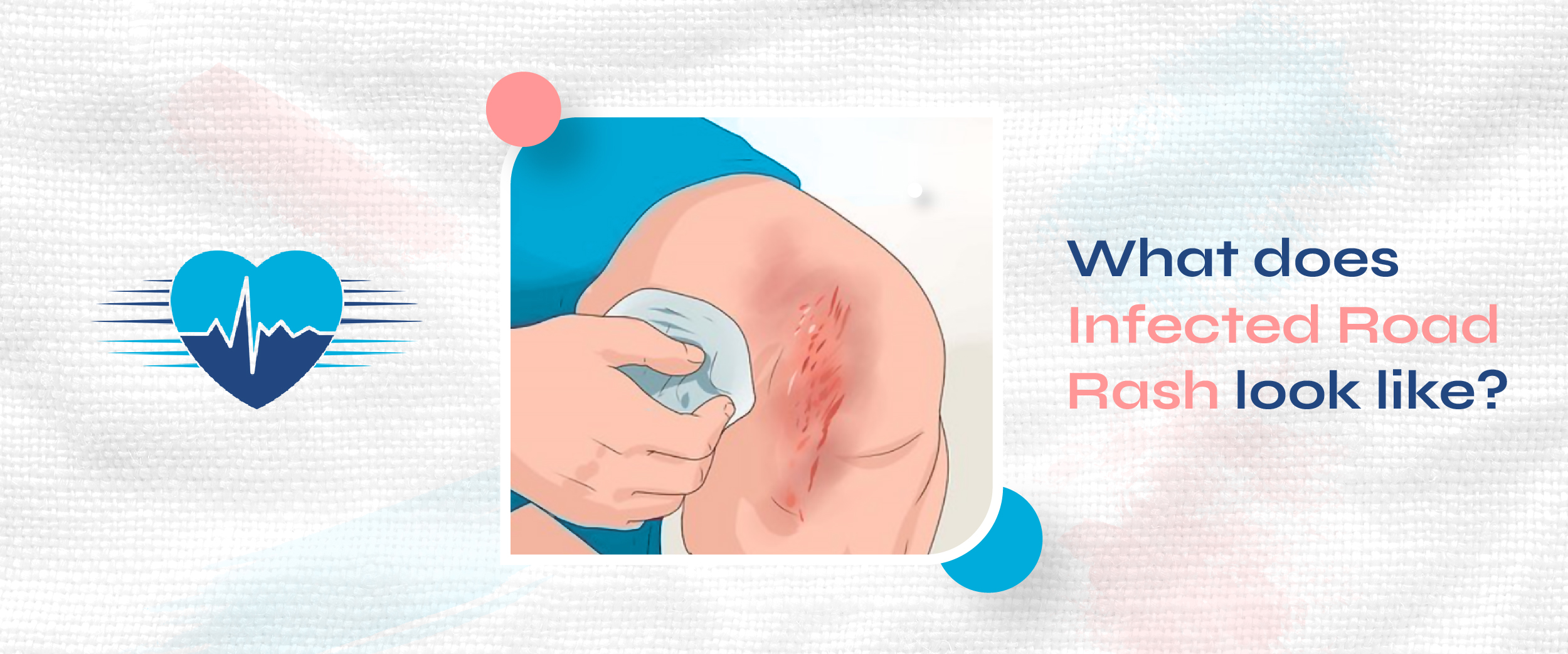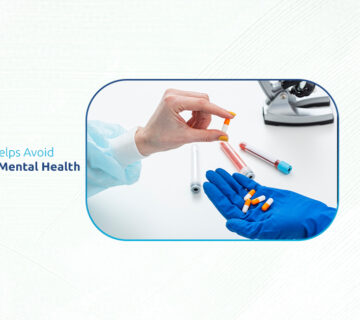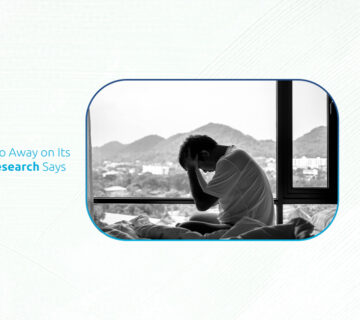Road rash is a common injury. It’s often seen from skin scrapes on rough surfaces, like those from a motorbike crash or bicycle tumble.
An infected road rash can be worrisome. Complications can come if it’s not cared for right. But what does infected road rash look like?
It’s essential to identify the signs of infection to seek timely medical attention and ensure proper healing. Let’s discuss this important concern.
Today Telemedicine offers expert help for urgent health issues. We ensure reliable advice and peace of mind.
Our telemedicine platform efficiently addresses and treats rashes, insect bites, and skin irritations. Contact us for more information.
What Is Road Rash?
Road rash is when the skin rubs against hard surfaces leading to hurt areas like elbows, knees, eyes, face, shins, ankles, and shoulders. Road rash has different forms:
- Avulsion scrapes off skin tops, maybe showing fat, muscle, or bone.
- An Open Wound is a rip in the skin, needing stitches perhaps.
- Compression happens if body parts squeeze between things, often in motorcycle crashes.
Road Rash Degrees
Road rash is classified into three levels of severity:
-
1st Degree Road Rash
The mildest type affects only the top skin layer. It’s red and sore but heals with little care.
-
2nd Degree Road Rash
This type goes deeper, causing bleeding. The skin appears raw and might ooze or crust.
-
3rd Degree Road Rash
The most severe type, it damages deep tissues, possibly exposing muscles or bones.
What Activities Can Cause Road Rash?
Road rash is a friction burn from contact with rough surfaces like asphalt. It can happen during:
- Motorcycle accidents
- Bike falls
- Skateboarding spills
- Scootering mishaps
- Rollerblading falls
- Running accidents
- Vehicle falls
Spring and summer see more road rash cases. People are outdoors more and wear less clothing, reducing skin protection. Wearing protective gear can help reduce the risk.
What Does Infected Road Rash Look Like?
If a scrape or road rash gets infected, it could turn into a bigger problem. Recognizing these infections earlier can stop things from getting worse. So, what does infected road rash look like? Some signs that can show an infection are:
- The skin around the wound gets more red.
- The area that is hurt might get swollen and hot.
- There might be pus or a smelly liquid coming from the wound.
- More pain or soreness in the skin near the wound.
- Having a fever or feeling cold, if it is very bad.
If you see these symptoms, getting medical help quickly is very important.
How to Know If Road Rash Is Infected?
Check if your infected road rush by observing the following:
- Excessive Redness: It’s expected to see some redness, but if it moves far from the wound, an infection might be the cause.
- Increased Pain: Pain that suddenly increases after the hurt could point to an infection.
- Swelling: Swelling that worsens over time, rather than improving, suggests an infection.
- Pus Formation: When pus appears, mainly if it is green or yellow, that’s a big sign of infection.
How Long Does Road Rash Take to Heal?
Road rash healing time based on wound depth and treatment. In simple cases, where just the skin’s surface is harmed, usually gets better within a week or two.
Deeper skin layer injuries need longer, about 2 to 4 weeks. The most severe cases could take from many weeks up to months for total recovery.
Not only the injury severity but also your overall health and wound care regimen influence road rash recovery time.
Effective cleaning and injury prevention can accelerate the healing process.
How to Treat Road Rash from Motorcycle Accidents?
You can treat minor road rash from a motorcycle accident at home if the injuries are like small cuts or scrapes. Follow these steps:
- Clean Your Hands: Get all the dirt off your hands to keep germs out of your scrape.
- Take Care of the Scrape: Pour some fresh water over it and dab it lightly. Don’t brush it hard, that’ll just push in the dirt deeper. Use a soft tissue or cotton bud if you want.
- Get Rid of Any Dirt: If you still see bits in the scrape after washing, pick it out with a tweezer, but gently, you don’t want to make it worse.
- Use Ointment: Rub some ointment on it to keep germs away. It’ll even make the bandage come off easier later.
- Put a Bandage On: Cover the scrape with a bandage or if it’s big you can use a piece of medical tape and clean gauze.
- Keep It Clean: Change the bandage and add more ointment often. Scrapes from a bike crash can take longer to heal than other cuts.
- Monitor for Infection: Look for more swelling, spreading redness, nasty smelling goo, more pain, or feeling sick. Sometimes, these are signs of a big infection that a doctor needs to take care of.
If there’s something about these steps you’re not sure about, you should ask a doctor or nurse for help so it doesn’t turn into a bigger problem or a scar.
How Doctors Treat Severe Road Rash?
A medical expert will assess the seriousness of your road rash. For light injuries, normal first-aid methods will be applied.
Deeper wounds might require the kind of care used for serious burns. This process might include:
- Hydrating via a drip
- Using antiseptics
- Removing dead tissue
- Even grafting new skin
In case of infections, doctors will intervene and the patient might be isolated to stop germ distribution.
If the injury has damaged muscles or nerves, you might need physical therapy.
Please note, that these treatments can be very expensive.
Home Remedies for Road Rash
Even if you sometimes need to see a doctor, road rash can also be treated at home:
- Aloe Vera: It soothes and helps reduce swelling while moisturizing your skin.
- Honey: Honey is a natural germ killer. It helps recovery and fends off infection.
- Coconut Oil: This oil keeps your skin from getting too dry and might kill microbes.
- Oatmeal Baths: A dip in an oatmeal bathtub can comfort tender skin and help the healing process.
When Should You See a Doctor for Road Rash?
If you’ve got road rash, here’s when you need a doctor:
- The injury is very big, more than three times the size of your palm.
- You can see bone or muscle.
- You’re bleeding a lot.
- The wound looks infected.
- The injury is on your hands, feet, face, or private areas.
- There are foreign objects like glass or dirt stuck in the wound.
If any of these things happen, don’t wait to see a doctor.
Conclusion
To identify potential issues, it’s important to know “What does infected road rash look like?”
Road rash infection signs can differ. Yet, early detection is key for good treatment and healing.
Knowing the stages of road rash, watching for infection, and applying the right treatment can improve how you handle road rash wounds.
If you’re not sure how severe your injury is or if infection signs show up, always ask a healthcare expert. Quick and efficient road rash care leads to a rapid, smooth recovery even if you have aging skin.
FAQs
Q: Does road rash leave scars?
Yes, road rash can leave scars, primarily if it’s bad or untreated. Scars from road rash can be reduced by utilizing lotions and sunblock can decrease scarring.
Q: What is the best cure for road rash?
Correct cleansing, antibiotics, and shielding the injury are the best steps. If it’s really bad, you should see a doctor.
Q: Could home treatments help with road rash?
Home remedies can supplement professional help but never replace it if the rash is bad.
Q: How to help with road rash pain?
Over the counter painkillers, cleanliness, and calming creams can help manage it.





